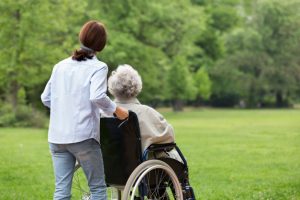The Five Stages of Parkinson’s Disease

Unfortunately, Parkinson’s disease is more common than muscular dystrophy, MS and ALS combined. Every year 600,000 Americans are diagnosed with Parkinson’s disease. More than seven to ten million people are already living with this worldwide. It is the second most common neurodegenerative disorder, the first being Alzheimer’s. This disease develops rather slowly in the human body moving through not one, or two but five stages.
Parkinson’s disease is also known as idiopathic Parkinson’s disease. It is a clinical syndrome caused by the lesions in the basal ganglia. In the basal ganglia, cells producing dopamine degenerate over time and this reduces the level of dopamine.
What is Dopamine and Why is it important?
Dopamine is a neurotransmitter that facilitates control and coordination of movements.
Learn more about the Progression of the five stages of Parkinson’s Disease below:
1st Stage
Your loved ones may exhibit the following symptoms during the first stage or the early stage of Parkinson’s:
- Symptoms such as tremors take place on one side of the body
- Symptoms are troublesome, but cannot be termed disabling
- Posture, facial expression or sense of balance may change
2nd Stage
During the second stage of Parkinson’s, a person shows an inability to complete some regular physical tasks.
- The symptoms result in minimal stability
- Symptoms (tremors and other motor symptoms) appear on both sides of the body
- Posture and equilibrium is affected
3rd Stage
This is the middle stage of Parkinson’s disease. A higher degree of disability can be seen.
- Movements become slower
- Daily tasks are affected, but people can still complete them
- Experiences loss of balance and decreased reflexes
4th Stage
This stage indicates an advanced stage of Parkinson’s disease.
- Severe symptoms can be witnessed as people find it difficult to complete simple tasks, living alone is difficult now.
- Movements turn rigid or sluggish.
- Shaking reduces or disappears due to unknown reasons.
5th Stage
The final stage takes over the physical movements completely.
- The vitality of both the mind and the body are on the decline.
- There are changes in strength and equilibrium. Walking and standing are even more difficult. Round the clock assistance is required.
How to Take Care of Somebody with Parkinson’s Disease Patient
Parkinson’s disease takes time to develop, and the signs appear gradually. The patient can take care of himself/herself for some time, but in the later stages of the disease, living independently is difficult, even with support. It is emotionally trying to see loved ones going through this condition. Providing them with the care they require is difficult. As a family member, you can still manage care in the initial stages, but the later stages are more challenging. Taking care of a loved one with Parkinson’s disease can be an uphill task that might affect you as well.
Appropriate senior home care can help a Parkinson’s patient continue to live with some independence in their day-to-day life while they stay within the comfort of their home. Be sure to choose the right assistance. Just check that the caregivers are qualified to provide a healthy diet, assist in physical activities, and cognitive stimulation.